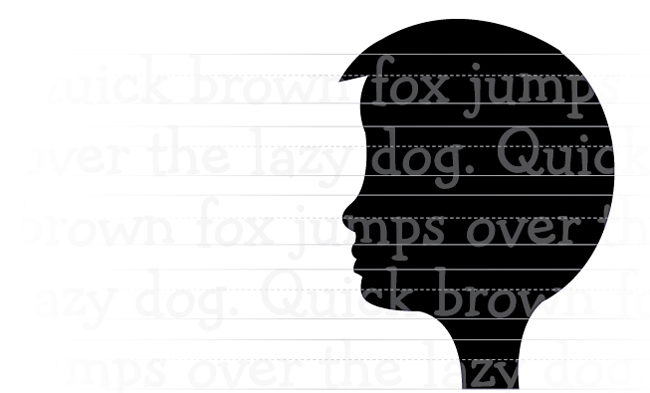BY JANET MANDELSTAM
With computers, tablets, and smartphones able to communicate everything from 140-character tweets to book-length manuscripts, is there really any need for handwriting today?
Karin James thinks so. The Indiana University neuroscientist has conducted experiments with young children that show an important connection between writing by hand and the learning process.
The relevance of handwriting is a hot topic in educational circles these days as most states have adopted the Common Core State Standards Initiative, which calls for teaching handwriting only in kindergarten and first grade. In response to citizen concerns about de-emphasizing handwriting, the newly crafted Indiana Academic Standards call for handwriting instruction from kindergarten through fifth grade. But the national trend is clear: Penmanship classes are out; keyboard proficiency is in.

IU neuroscientist Karin James. Courtesy photo
James’ handwriting research has focused primarily on printing. Research shows there is a network in the brain that is active when people read, but the young subjects in James’ brain imaging research were not yet reading or writing when first tested. Their brains were scanned in an MRI machine. Then they were asked to reproduce a letter in one of three ways: They could type it on a computer, trace it, or print it freehand. The subjects were scanned again, and when the scans were compared, “We found that children who can’t read activated the same network as readers — but only those children who printed the letter,” she says. Those who typed or traced it showed no such brain activity.
“Printing is a fine motor skill, and fine motor skills are important for brain development,” says James. “Learning with their fingers and hands is important for preschool kids.”
National Common Core standards do not include cursive anywhere in the curriculum, leaving that decision up to individual states. Indiana’s standards leave cursive up to individual school districts. James’ study of second graders who can read found no difference in brain activation when the subjects were shown both cursive and printed text.
James is also studying how writing can affect learning math. All of this work “is examining how different types of learning change brain processing,” she says. So will handwriting survive? “The research is out there. It is the responsibility of the field of education to respond to the research,” the IU neuroscientist says.












Let’s try to work this out of the “educational” news beat and back into the “changing nature of the human” category. Has the situation changed from 2011 when I wrote this?
http://btownerrant.com/2011/07/21/learning-cursive-minds-in-our-hands/